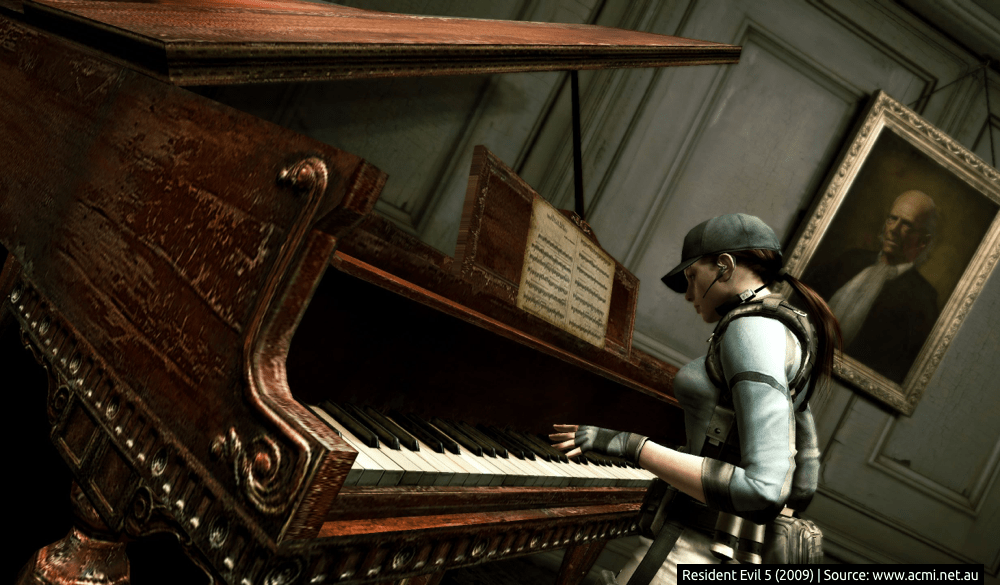What makes a good game sound great? There’s an art to sound design in games that dates back to the first blipping Pong arcade machines and has progressed to the point where it now has a few things to teach even it’s older brother, the film industry.
Heard the latest?
IGN’s take on the best sound designs of 2020 features the following top 5 list:
- The Last of Us Part 2
- Astro’s Playroom
- Doom Eternal
- Half-Life: Alyx
- Star Wars Squadrons
But how is the bar set for audio in today’s game design landscapes? IGN talks about what sounds are chilling, which evoke bombastic action, and why sound is so influential when used as a game mechanic. Blogger Phill Cameron suggests 7 factors that represent good sound design lessons for gaming:
- A complex soundscape – by fading sounds in and out based on distance, they create a soundscape that is dense and complex but not cluttered or unpleasant.
- Unique sound experiences – think Simlish or Animalese from The Sims and Animal Crossing respectively. These are complete novel languages that really help define the style of these games.
- Tone suiting the story – taking Bioshock 2 as an example, sound can conjure up feelings and assumptions that can help you enrich the story you’re telling. Futuristic yet derelict, audio diaries and rumbles of broken machinery set the scene as well as any written introduction.
- Being consistent – tricky when you want to present a range of soundscapes with a game. Portal 2 using a musical positive feedback mechanism as you solve puzzles throughout the game is one good example.
- Ambitious design – investing heavily in sound design and making it a pivotal part of your game’s experience will guarantee it’s memorable and enjoyable to listen to. Sound design shouldn’t be an afterthought.
- Use empathetic, emotional, and personal sound – tugging at the heartstrings can be justified if done sparingly and with care. But, regardless of whether it’s sympathy, fear, excitement, or serenity you want to spark for your players, you need to plan sound design accordingly.
- Maintain tension and bring surprise – most games will have some degree of tension as the player needs to rise to the challenges a game presents them. By properly modulating between low and high tension, as well as breaking tensions through surprising sounds, you can foster the right level of tension to suit your overall design.
Echoing through the ages
Starting in the 70s, with the first commercial games hitting the market, sound design already existed in gaming, if in a relatively primitive way. Still, developers could adjust pitch and duration of the bleeps they had to work with to create unique sounds for different events within games.
Then in the 80s, game sound designs took on the role of composing more complex scores for games using waveforms. There wasn’t much capacity for overlapping or distinct sounds, but these composers used ingenuity and focused on making memorable melodies.
By the 90s, with more sophisticated hardware available, real instrumental music could be added to video games. While some stuck to tradition, many rose to the challenge of exploring the new possibilities available for gaming sound design. Not only did this diversify sound within games, but it allowed designers to focus on solving problems beyond creating a catchy melody.
Since this time, and up to the modern era of game sound design, we’ve seen more complex sound mechanics. Real-world sound effects sampling and dynamic music have both shifted the paradigm and we can hear ever-more complex and engaging soundscapes in games being designed.
Should films listen to video games?
Joji Fukunaga, director of the latest James Bond movie ‘No Time to Die’ explains that his love of gaming has led him to take elements from video game sound design and incorporate them into his cinematic work. This seems to be most relevant for areas where video game sound design has invested more heavily due to the nature of the industry, such as gun sound design, a staple of the highly popular FPS genre.
In the past, it has been video games using films for sound design inspiration, in order to make them feel more cinematic. It’s interesting then, that as sound design in gaming has evolved, the relationship has come full circle. In fact, it’s refreshing to see the video gaming industry having more to often Hollywood than cheesy adaptations. Hopefully this trend will further solidify gaming as a form of media on equal footing with film and television.
Sources
https://screenrant.com/no-time-die-movie-video-game-sound-influence/
https://www.acmi.net.au/stories-and-ideas/evolution-audio-videogames/
